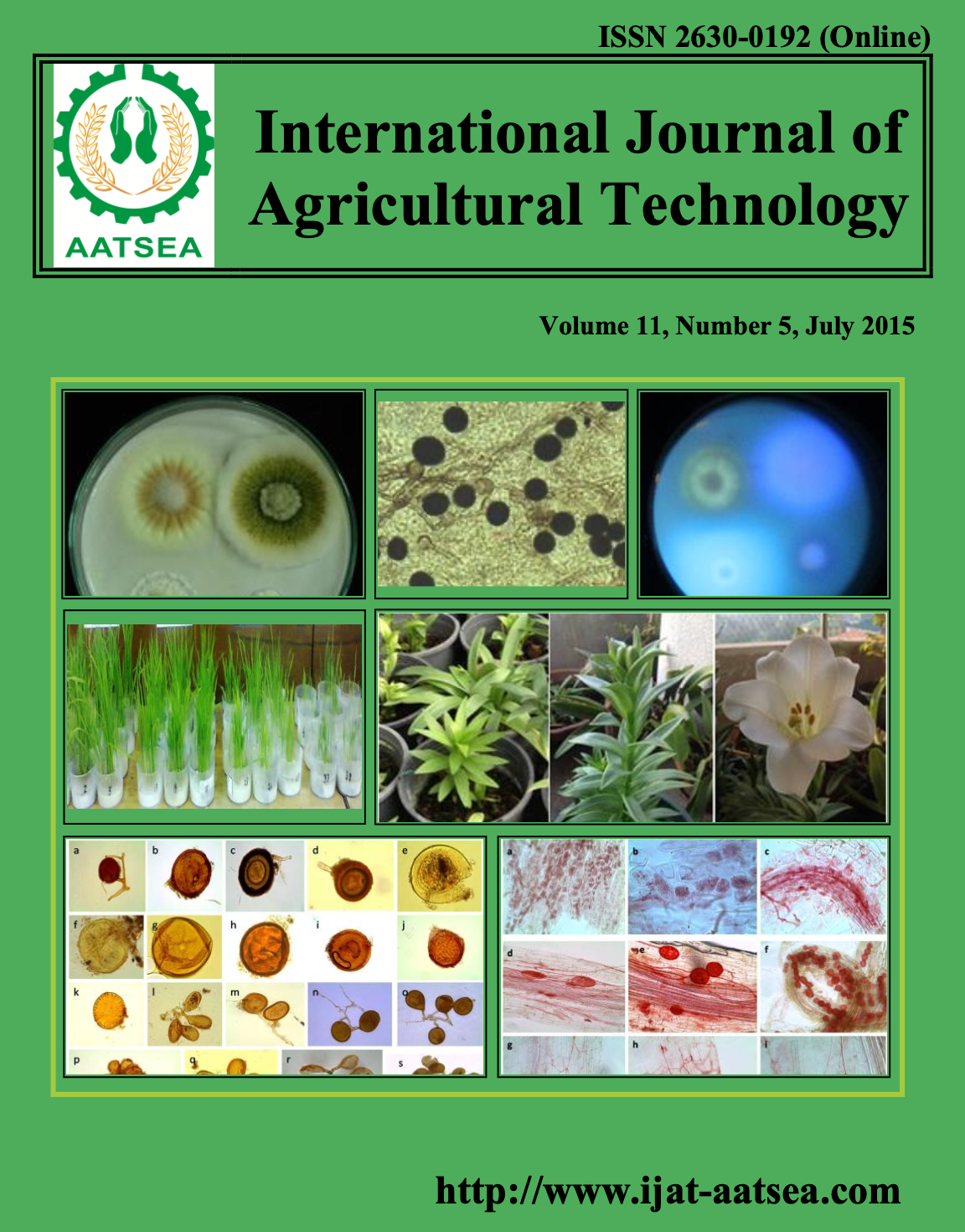Acute toxic and hepatopancreas syndrome caused by Chlopyrifos ethyl to black tiger shrimp (Penaeus monodon) and white shimp (Litopenaeus vannamei) in Mekong River Delta of Vietnam
Main Article Content
Abstract
Litopenaeus vannamei and Penaeus monodon is 0.1412; 0.1197; 0.0042 and 0.0041 mgl-1respectively. It means adults of both shrimps are more tolerent to Chlopyrifos ethyl than young ones (about 30 times) while the difference of tolerent between to tested species are not clearly recognized. Surgical histopathological assessment of hepatopancreassyndrome necrotizing pancreatitis in Chlorpyrifos ethyl showed exposure at low concentrations, shrimp in hepatopancreas samples collected at 10 and 20 day after treatment. Expression of the transformation is phenomenal concentration of blood cells around the liver pancreas and some changes in the structure of the hepatopancreas tube. When exposed at higher concentrations (80% or higher value of LC), the majority of experimental shrimp died within 10 days after exposure.
Article Details

This work is licensed under a Creative Commons Attribution-NonCommercial-NoDerivatives 4.0 International License.
References
American Public Health Association (APHA), American Water Works Association (AWWA) and Water Environment Federation (WEF) (1992). Standard Methods for the examination of Water and Waste water, 18th Edition. Washington, D C: American Public Health Association.
Washington, D. C. (1985). Canada water quality guidelines for the protection of aquatic life.
Chambers, J. E., Forsyth, C. S. and Chamber, H. W. (1989). Bioactivation and detoxification of organophosphorus insecticides in rat brains. In Caldwell, J., Hutson D. H., and Paulson. G. D. Intermediary xenobiotic metabolism: Methodology, mechanisms and significance”, Basingstoke, U.K: Taylor and Francis. pp. 99-115.
Flores, V., Galan, M. and Sales, D. (1980). Contaminacion de las agues de la Bahia de Gadiz (IV). Ensayos de biodegradabilidad con dodecilsulfato sodico. Ingenieria Quimica 131:81-111.
Lightner, D. V. (1996). A handbook of shrimp pathology and diagnostic procedures for diseases of cultured penaeid shrimp. Baton Rouge, LA: World Aquaculture Society.
Oladimeji, A. A. and Ologunmeta, R. T. (1987). Toxicity of water-borne lead to Tilapia niloticus. Nigerian Journal of Applied Fisheries Hydrobiology 2:19-24.
Racke, K. D. (1993). Environmental fate of Chlorpyrifos. Review of environmental contamination and toxicology 131:1-150.
Reish, D. L. and Oshida, P. S. (1987). Manual of methods in aquatic environment research Part 10. Short term static bioassay. FAO fisheries technical paper 247, FAO Rome. pp. 1-62.
Spragne, J. B. (1975). Measurement of pollution toxicity to fish: In: Bioassay methods for acute toxicity. Water Research 3:125-127.
Zelikoff, J. T. (1994). Fish Immunotoxicology. In Immunotoxicology and Immunopharmacology (eds. Dean, J. H., Luster, M. I. and Munson, A. E.). New York: Raven Press. pp. 71-95.


